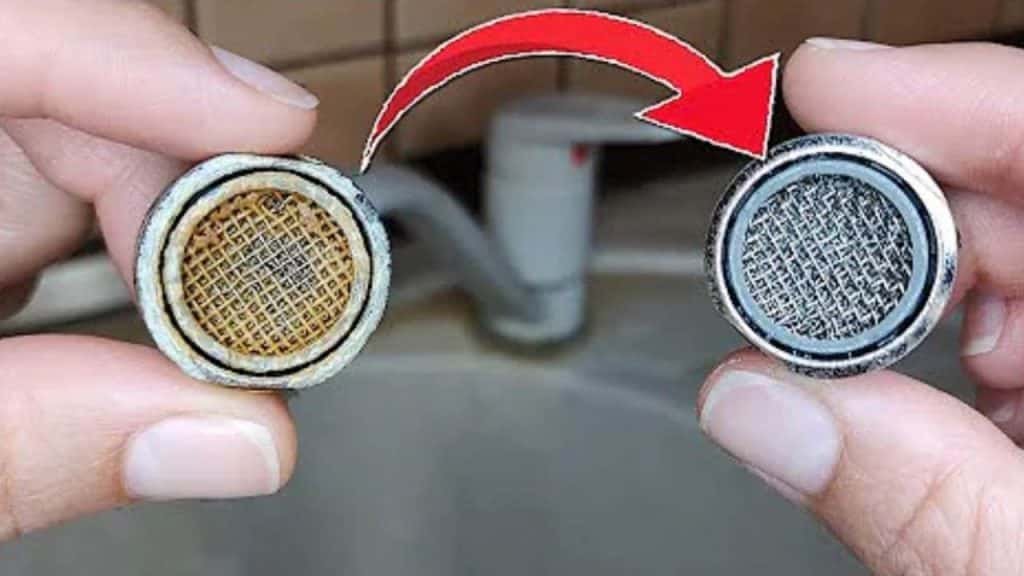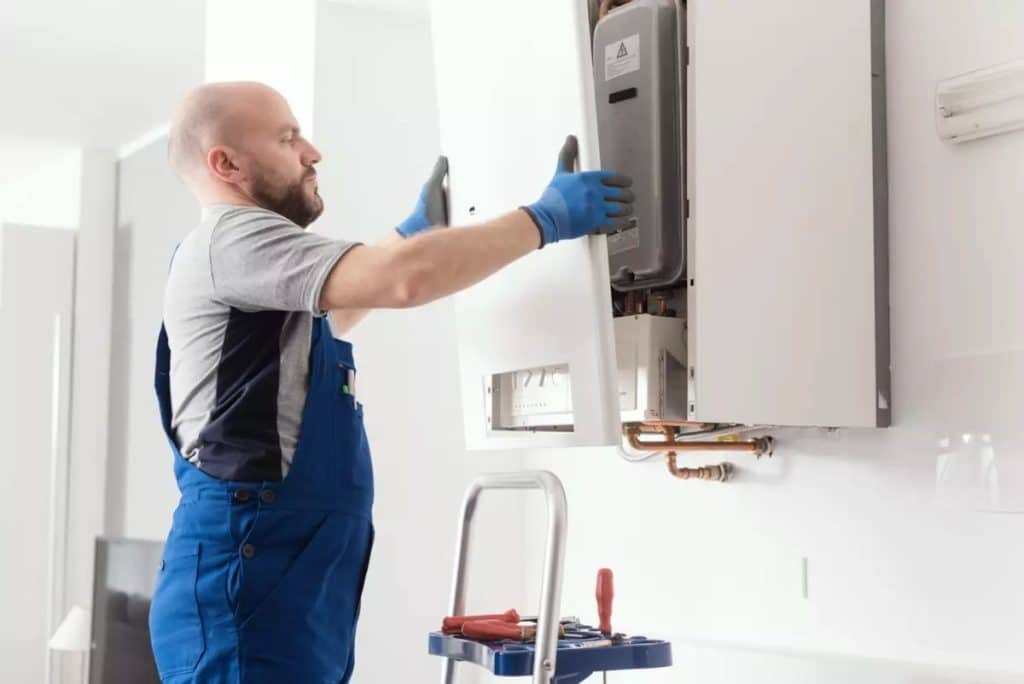Limestone is one of the more hostile enemies of the plants of thermo-hydraulics and taps, because it tends to block the pipes, making the passage of water less easy.
Some areas of Italy have very hard water, therefore characterized by a high presence of limestone, creating quite a few inconveniences in the home.
An example? Could be prevent the boiler from heating the domestic hot water properly, or, in some cases, by blocking it.
Not at home, limescale is the number 1 cause listed in our article dedicated to boiler blocked.
In addition to equipping the boiler with a dirt separator filter, We advise you to carry out routine cleaning of the taps, so the chromator will not be damaged by forming unsightly marks and at the same time you will preserve its functionality. We explain everything to you in this article Remove the vinegar, put the vinegar in: How to Clean the Faucets
As for the filters, these must also be freed from limescale to allow the free flow of water, thus also avoiding wasting energy and fuel to start the boiler.
Let's see together how to clean the tap filter from limescale in a simple, immediate and autonomous way, without the intervention of a technician specialized in thermo-hydraulics.
By the way, if you need any assistance, please feel free to contact us.
How often to clean taps from limescale
If you are wondering how often you need to clean the limescale from your taps, know that there is no single answer.
It depends a lot on the quality of the water of your municipality of residence, because, as mentioned at the beginning, in some areas it is harder, therefore richer in limestone, and in others less.
Generally, we recommend proceeding at least 2-3 times a year, it being understood that constant cleaning can only have positive effects on the system.
In short, if when cleaning the bathroom and kitchen you wanted to dedicate a few minutes to cleaning the limescale from the tap filters, you wouldn't do any harm.
That said, you will independently understand when to do it; if you notice that the water is not flowing more with a full and satisfying jet, that the pressure is low, or that the tap splashes water irregularly, then it's time for cleaning.
But what does cleaning taps from limescale consist of? It's very simple, and we'll explain it to you right away.
Keep reading.
Clean the taps from limescale by removing the filter
To clean the taps from limescale it is necessary to carry out a very simple procedure, which involves removing the filter.
Technically the filter is a defense device for the mixers, that is, an additional element that prevents breakages and leaks of the taps, as well as filtering the limescale from the water.
It is a very economical device, which you can buy in any hardware or DIY store.
Being a filter, prevents the passage of impurities of the water and pipes, but it needs to be cleaned periodically, because it tends to get clogged.
To remove the filter, all you have to do is unscrew it, using pliers, if it is too tight.
In this case, be careful not to damage the chrome of the filter, perhaps using a rag or a bit of paper.
Types of aerator filter for taps
The tap aerator filter is a very common element, each of us has one in the home, in the bathroom or in the kitchen, but we must not make the mistake of thinking that there is only one type.
In fact, depending on the model of tap mounted in the sink or bidet, they exist different types of filter aerator:
- Taps with retractable round aerator: to remove it, you need to disassemble the aerator using the extractor key contained in the box. If you have lost it, you can buy it online or in a specialized shop;
- Taps with visible round aerator: this is the most common type of filter, which can be unscrewed by hand, with pliers or a wrench (usually size 22). There are different forms, but the structure remains the same;
- Taps with concealed rectangular aerator: less widespread, this type of filter is placed on the back of the tap's spout, and must be unscrewed using an Allen key, supplied with the tap.
There are some on the market types of taps without filters placed at the end, due to their shape. This is the case, for example, of waterfall taps, very beautiful from an aesthetic point of view but a little less practical when it comes to cleaning limescale.
In these cases, we recommend that you ask the installer to show you how to clean the filter, often placed next to the pipe under the sink.
Having made these necessary clarifications, let's proceed with cleaning the filter.
How to clean the faucet filter
Once you have unscrewed the aerator filter, you will need to clean it. If it's not too dirty, just tap it and rinse it under running water.
To clean more thoroughly, we recommend following these simple steps:
- Get a container small in size, a disposable glass will be sufficient, inside which to place the filter (metal part and gaskets included);
- Pour some powdered bicarbonate inside the container;
- Pour some white vinegar. Reacting with bicarbonate, it will produce an acidic and slightly corrosive foam, which will help to remove limescale;
- Add some hot water inside the container, and leave to act overnight;
- The next morning, rinse with plenty of running water and screw the filter back onto the tap.
However, if you notice that the filter is too damaged, it is best to replace it with a new one.
Conclusions
Cleaning the tap filter from limescale, acting on the aerator filters, is really very important for the health of the taps and the plumbing system.
Furthermore, you allows you to avoid waste, in particular in relation to the production of domestic hot water.
Clogged faucets will make it ineffective the work of your gas boiler – by the way, you have already consulted ours complete guide to buying a boiler? – only making you spend money on your bill for little hot water.
Periodic cleaning is the first rule of correct maintenance, never underestimate it.


